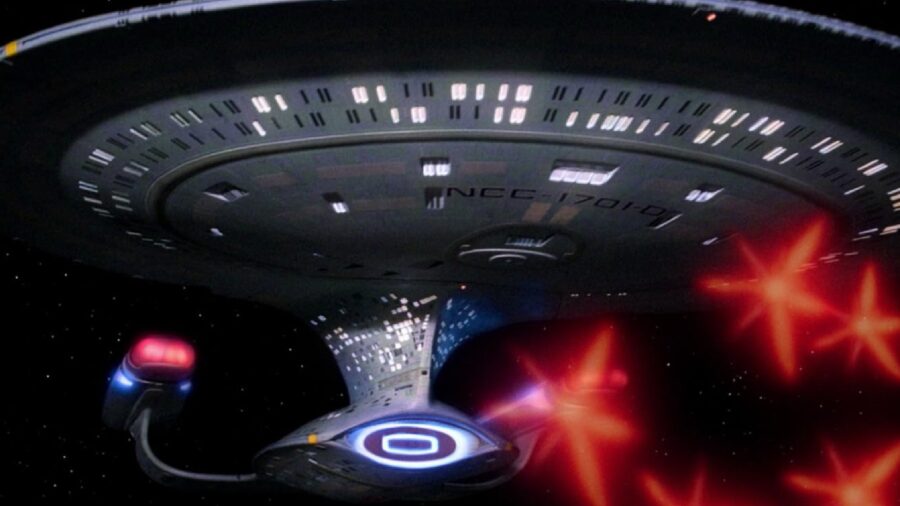Star Trek: Discovery Hides DS9 Connections In Plain Sight

Star Trek: Discovery is in its fifth and final season, and the show has been making frequent messages to other shows in the franchise on its way out. For example, the season-long mystery about the Progenitors is building off of Captain Picard’s research in the TNG episode “The Chase,” and our characters recently discovered the ISS Enterprise from the TOS episode “Mirror, Mirror.” It turns out the Star Trek: Discovery episode “Mirrors” hid a Deep Space Nine reference in plain sight by referencing travels to the Gamma Quadrant, seemingly confirming how important Bajor has remained in the 32nd century.
Deep Space Nine’s Game-Changing Wormhole

To understand the importance of this Star Trek: Discovery reference, you need to cast your mind back to the first episode of Deep Space Nine and how much it changed the lives of everyone on the planet Bajor. That was when Sisko reluctantly took command of DS9 to help Bajor rebuild and recover after the brutal occupation by the Cardassians. He discovered a wormhole in Bajoran space that would allow quick and easy travel into the otherwise remote Gamma quadrant.
The Importance of Stable Wormholes

An earlier episode of Star Trek: The Next Generation underscored why the discovery of a stable wormhole near Bajor was so important. In the episode “The Price,” the Federation is so excited about the existence of a stable wormhole to the Delta Quadrant that they start bidding against other groups to manage the wormhole (I guess they forgot the whole “we don’t use money” idea that day). Eventually, Geordi La Forge learns that the exit for the wormhole is not stable and that anyone who goes through might not be able to come out, something two Ferengi discover the hard way.
Bajor Transformed Over Time

In Star Trek: Deep Space Nine, Sisko is responsible for the discovery of a wormhole near Bajor that is stable on both sides, allowing travel to and from the Gamma Quadrant. This discovery is a game-changer for everyone involved. Bajor suddenly went from being a galactic backwater to being a hub of commerce and travel. Accordingly, Deep Space Nine went from being a relatively unimportant space station to the most important Starfleet base, especially during the Dominion War.
Background on Moll and L’ak

Of course, you’re probably wondering what this Star Trek history lesson has to do with either Discovery or Bajor. The episode “Mirrors” gives us more background on Moll and L’ak, the Bonnie and Clyde duo who always seem to stay one step ahead of Captain Burnham in the race to learn more about the Progenitors. Moll reveals that when she was younger, her father promised to take the family to some kind of colony in the Gamma Quadrant that he considered a safe haven.
Moll’s Motivation

As a now-grown courier and career criminal, one of Moll’s big motivations remains getting enough latinum to start a new life for herself in the Gamma Quadrant. To me, though, the most interesting thing about this Star Trek: Discovery episode was the casual confirmation that Bajor remains extremely important in the 32nd century. Vessels traveling all the way to the Gamma Quadrant would still have to use the Bajoran wormhole, and that phenomenon was likely all the more important during the Burn when dilithium was scarce and warp travel impossible.
Discovery’s Nod to Bajor’s Significance

While it doesn’t lean as hard into Deep Space Nine fan service as certain episodes of Lower Decks, I was quite happy to see Star Trek: Discovery quietly confirm that Bajor remains one of the most important places in the galaxy. Even in the far future of the 32nd century, this wormhole remains the only way to reliably access the Gamma Quadrant.
And since Star Trek has never followed up on that wild Deep Space Nine finale, it’s entirely possible that Benjamin Sisko is still in that wormhole, having non-linear conversations with the Prophets and, if they’re lucky, sharing his father’s jambalaya recipe.












